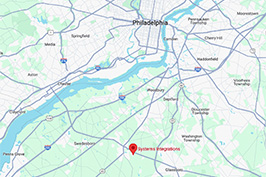The Hidden Threat in Your Security System: Understanding Critical Network Vulnerabilities
In today’s interconnected business environment, security systems are no longer just about cameras and access control – they’re potential entry points for cybercriminals. Recent findings have revealed alarming vulnerabilities in certain network devices that could put your entire organization at risk. As a Security Industry Association Cybersecurity Certified integrator with over two decades of experience protecting businesses of all sizes – from local offices to global enterprises like WebMD – we’ve seen firsthand how the wrong choice of security equipment can create devastating security gaps.
The Growing Threat Landscape
Modern businesses face a complex web of security challenges. Your security cameras, access control systems, and network devices aren’t just monitoring your facility – they’re connected to your broader network infrastructure. When these devices have vulnerabilities, they become potential gateways for:
- Unauthorized system access
- Malware deployment
- Sensitive data theft
- Network compromise
- Evidence tampering
- Botnet recruitment
Recent Security Findings: A Wake-Up Call
Security researchers have uncovered numerous critical vulnerabilities in certain manufacturers’ devices, including:
- Authentication Bypasses: Allowing complete admin access without credentials
- Command Injection Flaws: Enabling remote control of devices
- Credential Exposure: Improper password storage and protection
- Malware Vulnerabilities: Enabling recruitment into botnets for DDoS attacks
The Real Cost to Your Business
For organizations of any size, these vulnerabilities pose several serious risks:
- Data Theft: Compromised devices can serve as entry points to access sensitive business information, customer data, and proprietary information
- Business Disruption: Malware-infected systems can lead to unexpected downtime
- Compliance Violations: Security breaches can result in regulatory non-compliance
- Reputational Damage: Security incidents can erode customer trust and damage brand reputation
Why Traditional Solutions Fall Short
Many organizations attempt to address these risks through:
- Regular firmware updates
- Password changes
- Network segmentation
While these are important steps, they don’t address the fundamental issue: using potentially compromised equipment in your security infrastructure.
The Systems Integrations Approach
As a Security Industry Association Cybersecurity Certified integrator, we take a comprehensive approach to business security:
- Trusted Partner Selection: We exclusively partner with proven manufacturers like PDK, Hanwha, Rhombus, and others known for their robust security practices and reliable support
- Multi-Layer Protection: Our solutions integrate physical security with cybersecurity measures
- Professional Management: 24/7 monitoring and support ensure your security system remains protected
- Regular Security Audits: Proactive vulnerability assessment and remediation
Protecting Your Organization
To ensure your security system isn’t your biggest vulnerability:
- Evaluate Current Infrastructure:
- Audit existing security devices for known vulnerabilities
- Review network segmentation
- Assess update and patch management processes
- Implement Best Practices:
- Choose security partners with proven track records
- Maintain regular update schedules
- Properly segment security systems from critical networks
- Monitor for unusual device behavior
- Plan for the Future:
- Replace end-of-life equipment
- Document security procedures
- Train staff on security awareness
- Establish incident response protocols
Success Story: Enterprise-Level Security
Our expertise in handling complex security needs is demonstrated through our successful implementation of a global VMS (Video Management System) upgrade for WebMD. This project showcases our ability to manage enterprise-level security solutions while maintaining the highest standards of cybersecurity protection.
Take Action Now
Don’t wait for a security breach to expose vulnerabilities in your security system. As your trusted security partner serving, Systems Integrations offers:
- Free security assessments
- Professional system upgrades
- Managed security services
- 24/7 emergency support
Whether you’re a small local business, a growing mid-sized company, or a large enterprise, your security infrastructure deserves the highest level of protection. Contact Systems Integrations at (866) 417-3787 or sales@systems-integrations.com to schedule a comprehensive security evaluation of your facility.
Remember: Your security systems should be your strongest defense, not your biggest vulnerability. Choose a partner who understands both physical security and cybersecurity to protect your organization effectively.


